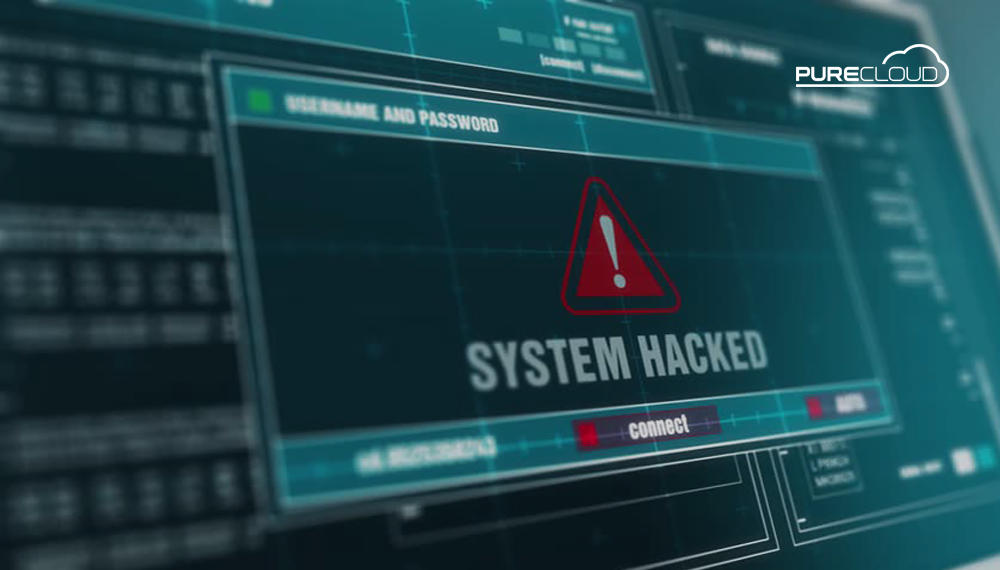With cybercrime becoming even more challenging than ever before, it’s vital that we work together in order to lessen these attacks! Astonishingly, 80% of security breaches are down to Phishing attacks, so it’s essential that businesses familiarise themselves with the typical framework of this type of malware threat. A Phishing attack is a type of Social Engineering technique which is used to obtain data. It’s a growing cyber security threat to SMB’s and if organisations don’t inform their employees to the characteristics of this threat, then your business could be in jeopardy.
Cybercriminals are becoming more and more advanced in their approaches and more attacks are becoming successful as a result. A new method which perpetrators are now starting to develop is carrying out research over a certain period of time and targeting specific individuals within an organisation so that when they decide to launch their attacks, they’re more successful.
The Covid-19 pandemic has become a Phishing attackers dream, with thousands of hackers jumping at the chance to flood inboxes with Phishing content. Discover the differences between Mass Phishing and Spear Phishing so that your business can differentiate between the two forms of attacks, which could ultimately save your organisation!
WHAT IS MASS PHISHING?
Mass Phishing is one of the most common types of Phishing methods used by hackers and that is simply because it’s quick and easy!
Cybercriminals will send the same constructed format to an array of targets in the hope that they get a catch! This is just a generic email that’s sent to lots of people, which will usually contain a harmful link or attachment which entices the individual into clicking the malicious content, as they believe it’s from a trusted source. The content appears to look legitimate because perpetrators rely on spoofing methods to make the information look authentic. Email headers will be constructed to replicate official organisations branding, so that users don’t question the authenticity of the content. If the user believes the information being provided is genuine and proceeds to click on the contents within the email, this can then lead to data being hacked and stolen or files being held to ransom by the cybercriminal.
Although this technique is not a very sophisticated approach, it’s an attack that people will still unfortunately fall for, that perpetrators can still financially gain from!
WHAT IS SPEAR PHISHING?
The generalised term for ‘Phishing’ refers to a cybercriminal randomly searching for a potential catch with very little effort of planning. Spear Phishing acts as the complete opposite and focuses on the strategic planning over a period of several months in order to obtain a more effective and successful catch. This relates back to the initial point of cybercriminals becoming more advanced within their methods, by spending more time focusing on one specific organisation or individual target, which relates to the ‘Spear’ within the name. If cybercriminals spend more time collating information about one organisation or person, then this usually means they’ll be targeting a high value business, where there is more to gain.
These types of attacks are normally very successful and that’s down to the amount of time perpetrators spend crafting their every move, in order to make sure every step is right before launching their attack. Spear Phishing is a more complex version of a normal Phishing attack as it involves more knowledge and power.
HOW TO PROTECT YOUR BUSINESS
Educate Staff
Phishing attempts require humans to work. Use a platform like Cybsafe to educate staff on what they should be looking out for and how to report suspicious emails.
Never Click on Suspicious Links
The criminals need you to do this for their attack to work, so always be suspicious and never let yourself feel pressured into clicking a link in an email.
Install & Update Technology
Technology is crucial in detecting threats on your computer and blocking unauthorised users from gaining access. Make sure it’s always updated to prevent vulnerabilities.
Passwords and 2 Factor Authentication
Never use the same password for more than one site and turn on two-factor authentication (2FA) if you can as this is a real deterrent for phishing criminals.
KNOW THE DIFFERENCE BETWEEN MALWARE THREATS!
Detecting cyber-attacks can be hard to distinguish due to the different variations and complexities that each demonstrates. If you’re an employee at any organisation it’s imperative to stay alert and look out for the signs of potential threats, as company data whether you’re a big or small organisation is extremely valuable!
Implementing a high level of security to reduce the infiltration of attacks is crucial and this will act as your first line of defence in protecting your business! Maintaining this is a vital step as downtime can be a massive burden to your business, so keeping software up to date with regular maintenance, is a must!
If you haven’t already introduced the human firewall, then this is something you must implement as part of your business strategy to generate more awareness and knowledge for employees.
Visit our website for more information on Phishing attacks…
DON'T TAKE THE BAIT!
Call us on 0333 150 6780, email or fill out the contact form below and a member of the team will be in touch.





Recent Comments